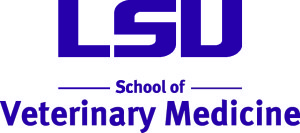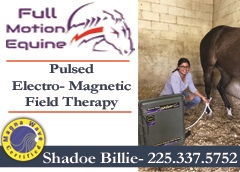Written by Laura M. Riggs, DVM PhD, DACVS-LA
Original Publish Date April 2015
The horse’s upper airway stretches from the nose to the lungs and allows the horse to run and exercise efficiently. Proper function of the equine upper airway requires the coordinated effort of a large number of anatomic structures. Very small changes in diameter of the upper airway are magnified in their effect on the ability of the horse to move air into the lungs and deliver oxygen to the blood effectively. For example, a 20% decrease in airway size doubles airway resistance, which blocks half of the air delivered to the lung. Less air in the lung means less oxygen to the muscles making exercise more difficult! Diagnosing these changes and diseases of the equine upper airway can be a challenge, especially when the airway is mildly affected or even completely normal at rest when viewed through the endoscope. Additionally, some abnormalities are intermittent and only are observed under certain situations such as increased head and neck flexion.
The use of x-rays and resting endoscopy has been the mainstay of upper airway diagnosis for many years. Many abnormalities affecting the upper airway can be diagnosed using these modalities. More recently the use of the dynamic endoscopy (see ad above) permits the diagnosis of dynamic conditions of the upper airway while the horse is exercising in its natural environment. Conditions like laryngeal hemiplegia (paralyzed flapper), arytenoid chondritis (inflammation of the flappers), persistent dorsal displacement of the soft palate (DDSP), epiglottic entrapment, subepiglottic cysts and fourth branchial arch defects can be diagnosed using the dynamic endocope.
The dynamic endoscopy has several advantages for diagnosis of upper airway abnormalities. Some abnormalities can only be seen during exercise, particularly at maximum-exertion when negative pressure is highest. Also, the actual effect of pathology on athletic performance can be observed and response to treatment documented. Often multiple, related abnormalities are causing poor performance or noise while only one may be diagnosed on resting endoscopy. Upper airway abnormalities detectable only under dynamic, exercising conditions include some grades of laryngeal hemiplegia, axial deviation of the aryepiglottic folds, intermittent DDSP, intermittent epiglottic entrapment, pharyngeal collapse and epiglottic retroversion. In approximately 30% of horses with upper airway abnormalities, more than one abnormality is actually present. (Lane, Bladon et al. 2006)
Dynamic upper airway endoscopy can be performed at the racetrack, on the farm, on an equine treadmill or over-ground using an endoscope fitted to the patient. Both modalities allow for the detection of dynamic abnormalities but there are differences between them. Treadmill upper airway endoscopy allows direct manipulation of the patient’s exercising speed and incline but it is much less flexible in other important variables which can be introduced to the examination. Additionally, a period of training is required for the patient to decrease the risk of injury during examination. Advantages of over-ground dynamic upper airway examination include the ability to exercise the horse in the normal environment where the abnormality occurs. It is a useful tool for both sport horses and race horses. Variables that can be introduced include exercise under saddle, exercise with significant head-neck flexion, or training on the track in the company of other horses.





